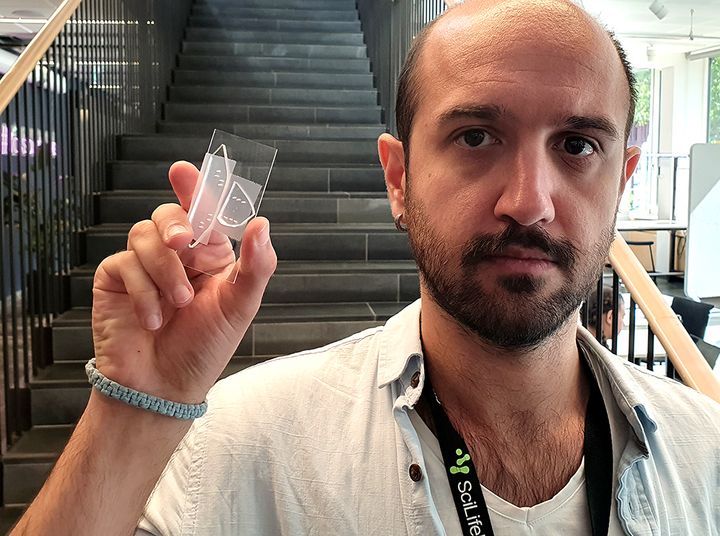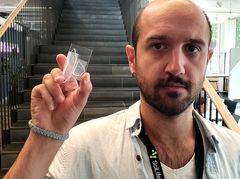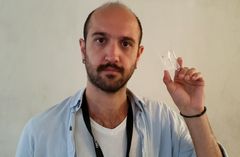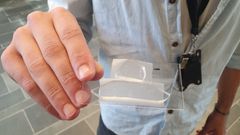Method to remove microplastics from water could also speed up blood analyses
Researchers demonstrated a way to speed up—and potentially scale up—the process for separating particles in fluids, which can be used for studying microplastics in drinking water or even analyzing cancer cells from blood.

Reporting in Nature Microsystems & Nanoengineering, a team led by researchers at KTH Royal Institute of Technology described a speedier and more precise method of elasto-inertial microfluidics, a process that involves controlling the movement of tiny particles in fluids by using both the elastic properties of the fluid and the forces that come into play when the fluid moves.
Selim Tanriverdi, a PhD student at KTH and lead author of the study, says the improved technique offers a diverse range of potential uses in medical testing, environmental monitoring and manufacturing. The method can help quickly sort cells or other particles in blood samples, remove pollutants in water to analyze, or enable development of better materials by separating different components more efficiently, he says.
The microfluidic device is comprised of specially engineered channels that can handle relatively large amounts of fluid quickly, making it perfect for applications requiring fast and continuous separation of particles, Tanriverdi says. Within these channels particles can be sorted and lined up — a crucial step crucial for separating different types of particles.
The improved accuracy is enabled by using special fluids designed specifically with high polymer concentrations. This imparts a viscoelastic character that can push like water and spring back, in a way comparable to an egg white. By combining these forces, particles can be guided to move in specific ways.
“We showed how the sample throughput can be increased within our microfluidic channel,” he says. “This would lower the process time for blood analysis, which is crucial for a patient.”
The study found that larger particles were easier to control and remained focused even when the fluid flow increased. Smaller particles needed optimal flow rates to stay in line but showed improved control under the right conditions.
Development of the method has its roots in a project to develop technologies for monitoring micro- and nano- plastics in water, which was funded by the European Commission. Tanriverdi had served as a Marie Skłodowska-Curie researcher on the project, titled MONPLAS.
Read the research article in Nature Microsystems & Nanoengineering https://doi.org/10.1038/s41378-024-00724-2
Contacts
David CallahanInternational Public Information OfficerKTH Royal Institute of Technology
press@kth.seImages



Subscribe to releases from KTH Royal Institute of Technology
Subscribe to all the latest releases from KTH Royal Institute of Technology by registering your e-mail address below. You can unsubscribe at any time.
Latest releases from KTH Royal Institute of Technology
For graphene production, a potential green alternative to mining graphite3.3.2025 14:14:40 CET | Press Release
Researchers in Sweden report a green alternative to reduce reliance on mining graphite, the raw source behind the "wonder material" graphene.
AI on aircraft can help prevent stalls and terrifying drops in altitude17.2.2025 15:58:14 CET | Press Release
Artificial intelligence could help prevent terrifying mid-air drops in altitude. In a new study, an international research team successfully tested a machine learning system for preventing trouble with turbulence.
Alternative to studded winter tires reduces airborne particles by 20 percent6.2.2025 14:41:07 CET | Press Release
On icy roads, studded winter tires can save lives – but they pulverize pavement and fill the air with dangerous, inhalable particles. A new Swedish study shows that both road wear and airborne particles could be reduced by as much as 20 percent if studs were made instead with an alternative hard metal.
As Scandinavian peninsula rises from sea, new satellite data shows gravity changes6.2.2025 09:15:25 CET | Press Release
Bouncing back from under the weight of Ice Age glaciers which have long since vanished, the Nordic region land mass is slowly rising above sea level. Two scientists at Sweden’s KTH Royal Institute of Technology have a refined a method for measuring and predicting the small details of how this slow movement changes Earth’s gravitational pull over time. One thing they found is that the Fennoscandinavian peninsula's land mass is more dense than previously known.
Study on ship sliming may enable reduced costs and emissions in ocean transport21.1.2025 11:25:01 CET | Press Release
Slime build-up is a costly drag on fuel efficiency for ocean-going cargo ships, leading to more emissions and, eventually, higher consumer prices. A recent study, however, suggests a new approach to managing this common problem.
In our pressroom you can read all our latest releases, find our press contacts, images, documents and other relevant information about us.
Visit our pressroom